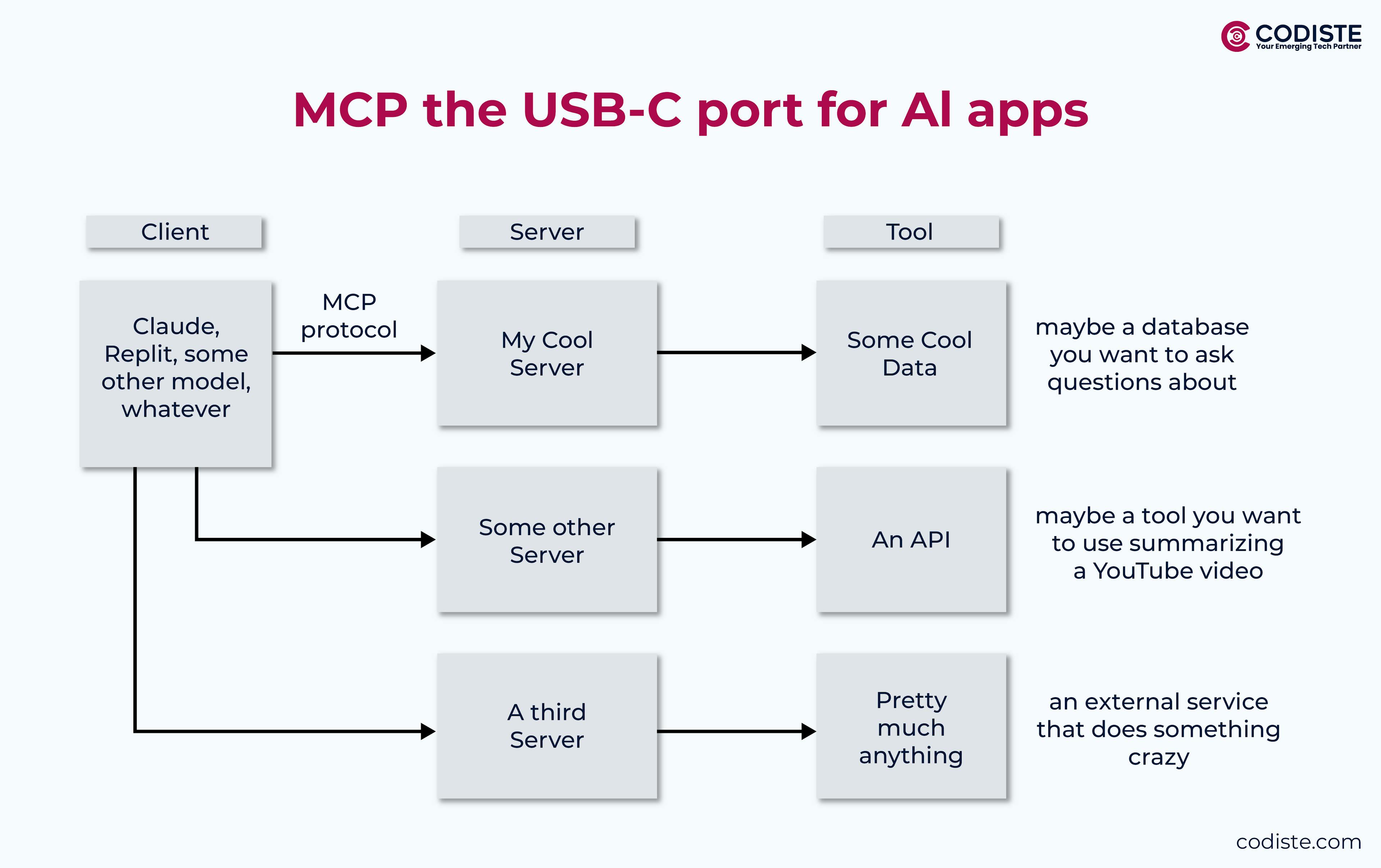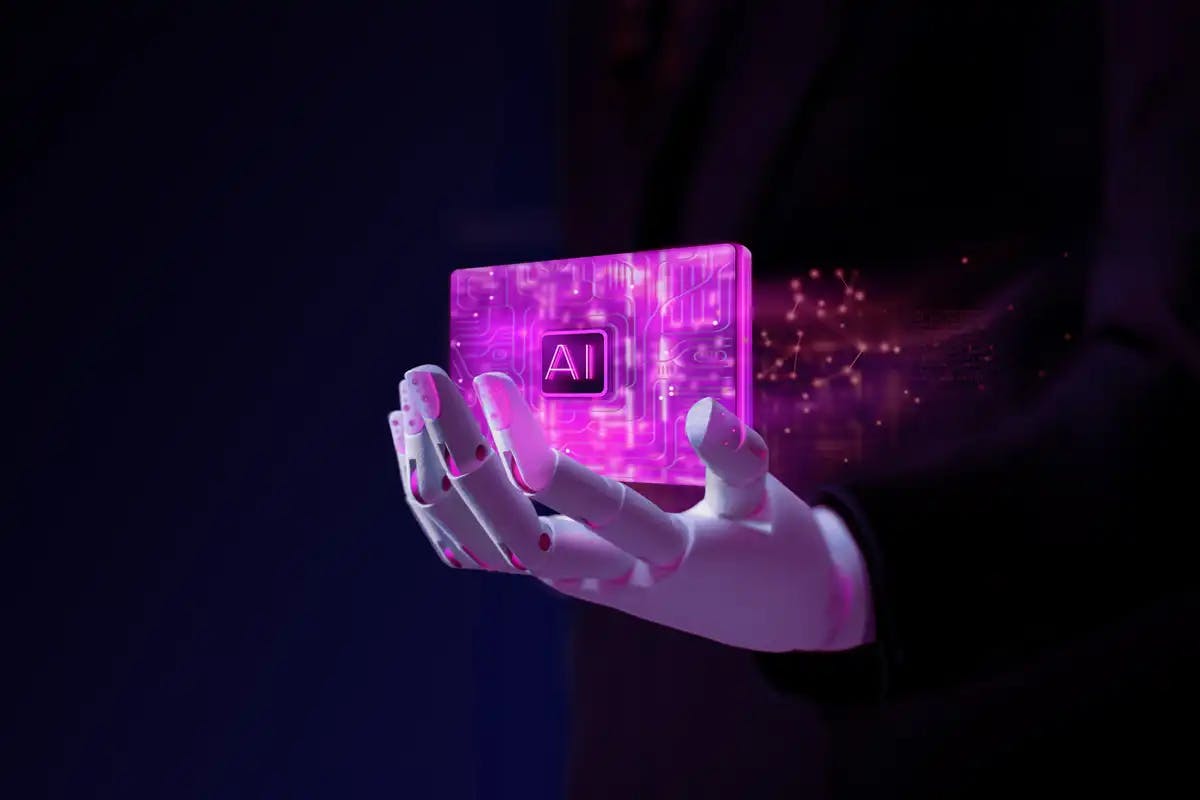


Integrating AI with a variety of internal systems is a huge challenge for businesses today. Without the need for specialised programming, businesses can provide Tools, Resources, and Prompts to AI models with the Model Context Protocol (MCP), which creates a standardised JSON-RPC interface. An MCP Server speeds up development and reduces operational risk by isolating AI-driven apps from point-to-point connections. It also offers multi-tenant isolation, geo-distributed scale, unified observability, and governance controls. The essential MCP server components, enterprise deployment architectural patterns, and security best practices will all be covered in the upcoming parts. Lastly, we will talk about how Codiste's AI gateway accomplishes efficient cross-chain MCP protocol scalability through the use of MCP and server groups.
The original purpose of the Model Context Protocol was to standardise the way AI models communicate with different tools and data sources. Essentially, MCP works as a uniform framework for communication that enables various systems to exchange capabilities, resources, and context via standardised interfaces.
Consider MCP as a digital system's all-purpose translator. In the same way that HTTP standardised web communication, MCP creates standard patterns for interactions between systems, independent of the technology stack that underlies them.
The MCP protocol advantage is revolutionary in the blockchain realm because of its foundational features, which include:

The main objective of the MCP protocol in blockchain is to increase blockchain networks' efficiency. The overall performance of blockchain systems can be greatly improved by MCP by cutting down on transaction delays and processing overhead.
MCP's capacity to enable connectivity throughout various blockchain networks is revolutionary. It creates new opportunities for data exchange, interoperability, and cross-chain transactions that were previously restricted by blockchain ecosystems' silos.
The MCP protocol in blockchain uses refined cryptographic algorithms to handle security, which is a major problem in the blockchain arena. This guarantees the security and protection of data sent over the network from unwanted access.
From supply chain management to financial transactions, MCP's versatility makes it appropriate for a broad range of uses. An important benefit in the quickly changing blockchain ecosystem is this flexibility.
Developers face a difficult fact in today's fragmented blockchain environment: creating applications that function across several chains frequently requires implementing unique code for each network. The blockchains of Ethereum, Solana, Polygon, and Avalanche each have their language, distinct consensus methods, and APIs.
This fragmentation creates several critical problems:
Enter the MCP protocol, a game-changing concept that has the potential to change our understanding of cross-chain scaling.
The Smart Contract Platform is the Foundation for DeFi apps.
Why wait now? Hop in to get yours made right now.
By creating universal communication protocols, MCP eliminates the need to create unique bridges for each pair of blockchains. What if there were a world where:
Real-World Impact: Without changing the fundamental logic for each network, a DeFi solution protocol may provide the same functionality on Ethereum, Polygon, and Arbitrum.
The resource-based architecture of MCP aligns flawlessly with the capabilities and assets of blockchain:
Chain Resources:
├── Asset Management (tokens, NFTs, liquidity)
├── Computation Services (smart contracts, oracles)
├── Consensus Information (block data, finality)
└── Network State (gas prices, congestion)
Applications can choose the best blockchain for each unique use case by treating many blockchains as interchangeable resource providers, thanks to this modular architecture.
State synchronization is a common problem for cross-chain applications. The context-sharing features of MCP offer:
Chain-specific complexity is abstracted away by MCP using clear, standardized APIs:
javascript
// Traditional approach - chain-specific code
const ethereumBalance = await web3Ethereum.getBalance(address);
const polygonBalance = await web3Polygon.getBalance(address);
const solanaBalance = await solanaConnection.getBalance(publicKey);
// MCP approach - unified interface
const balances = await mcp.getResource('user-balances', {
chains: ['ethereum', 'polygon', 'solana'],
address: userAddress
});
The blockchain sector is at a turning point in its history. Embracing established MCP protocol that allows for full interoperability is an alternative to continuing to construct isolated networks that need intricate, proprietary bridges.
In addition to resolving cross-chain scalability, the MCP protocol reimagines what is feasible when blockchains integrate harmoniously. The infrastructure layer that Web3 solution requires to realize their full potential is represented by MCP, which lowers development complexity and opens up new application categories.
The question is not if cross-chain standardization will occur, but rather if you will be prepared for it when it does. Finding a blockchain solution development provider that can weather all of your blockchain and web3 storms is advised in order to future-proof your business with such standardizations. Our numbers at Codiste speak for themselves, more than just words. This will ensure that you don't fall behind your competitors when the time comes to take advantage of these opportunities. Come along with us as we secure this Web3 and Blockchain adventure for the future.




Every great partnership begins with a conversation. Whether you’re exploring possibilities or ready to scale, our team of specialists will help you navigate the journey.